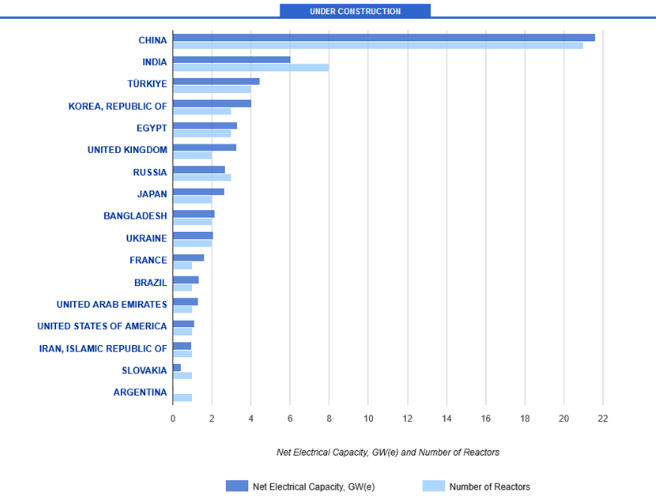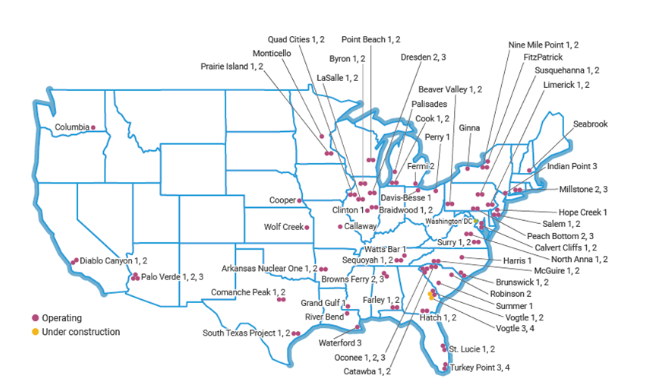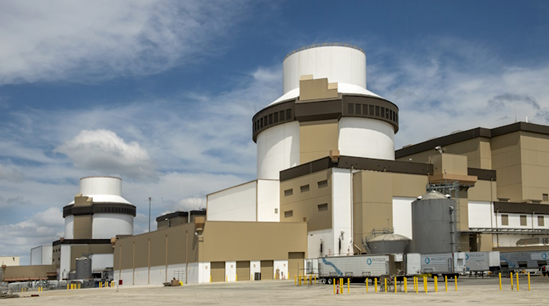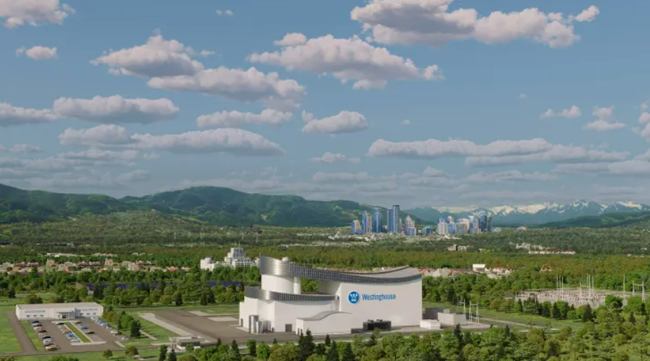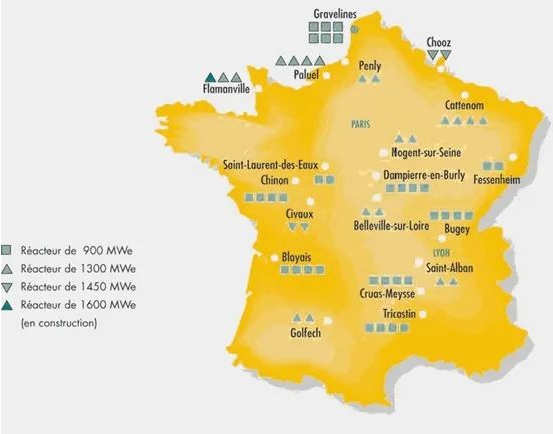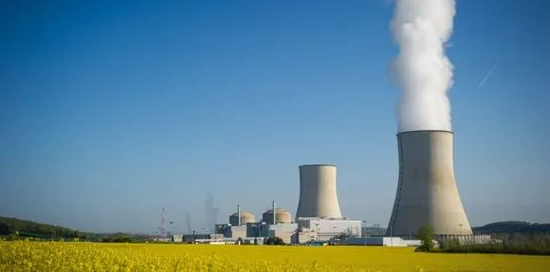Nuclear energy is a clean, low-carbon, safe and efficient form of energy, but after the Fukushima nuclear power plant accident in Japan in 2011, out of concern for the safety of nuclear power, the global development of nuclear power stepped on the “emergency brake”, Germany, Italy and other countries announced a “nuclear reduction” or even “nuclear abandonment”. “Abandonment of nuclear power”.
Among them, Germany’s last three nuclear power plants finally died on April 15 this year. Recently, the Japanese government launched the Fukushima nuclear contaminated water discharge to the sea, also intensified the public’s concern about the safety of nuclear energy.
However, in the past two years, the new crown epidemic impact on the energy supply chain, the epidemic after the economic recovery to stimulate energy demand growth, the Russian-Ukrainian conflict and other “black swan” events came one after another, resulting in soaring global energy prices, Europe into an energy crisis. Countries around the world have rethought their energy security strategies, paying more attention to energy diversity and autonomous and controllable energy supply. The development of nuclear energy has become a realistic option for many countries to ensure energy security.
Nuclear energy also plays an important role in helping to achieve carbon neutrality and climate goals. Research by the International Energy Agency (IEA) shows that global nuclear power capacity will need to double by 2050 to meet the climate change goals of the Paris Agreement.
At present, China, the United States, France and other major nuclear power countries are strongly supporting the development of nuclear power, South Korea and Belgium and other countries that previously restricted nuclear abandonment began or are ready to adjust the development of nuclear energy policy, there are nearly 30 non-nuclear countries are carrying out or ready to carry out the construction of nuclear power, the world’s nuclear energy has ushered in a new round of development boom.
Among them, China’s nuclear power approval on July 31 for the first time in the year opened the floodgates, the National People’s Congress one-time approval of six new units, will pull hundreds of billions of dollars of investment.
Global Nuclear Reactors Under Construction and Installed Capacity
Source: IAEA
01 China: Leader in the construction of new nuclear power plants
China plays an important role in the construction and operation of nuclear power plants. According to the International Atomic Energy Agency, China has 21 nuclear reactors under construction, which will have an installed capacity of more than 21 gigawatts. This is 2.5 times more nuclear reactors under construction than all other countries.
According to the Blue Book “China Nuclear Energy Development Report 2023” released by the China Nuclear Energy Industry Association in April this year, by the end of 2022, China had 54 commercial nuclear power units with a total installed capacity of 56.82 million kilowatts (kW), ranking third in the world, and four-fifths of these reactors, totaling 41 reactors, have been connected to the grid over the past 10 years.In 2022, China’s total installed nuclear power capacity accounted for 2.2% of the country’s total installed power capacity, and its power generation capacity was 417.78 billion kilowatt-hours, an increase of 2.5% year-on-year, accounting for about 4.7% of the country’s total power generation capacity, making nuclear power generation capacity the second largest in the world.
Schematic Distribution of Nuclear Power in China (as of December 22, 2022)
Source: China Nuclear Energy Industry Association
Since 2018, China’s nuclear power approval progress has accelerated, and in early 2021, the government work report put forward “actively and orderly development of nuclear power under the premise of ensuring safety”, which is the first time in many years that China has used the expression “active” to explicitly mention nuclear power. The “14th Five-Year Plan” even lists “promoting coastal nuclear power construction in a safe and steady manner” as an important task during the period. 2022 issued the “14th Five-Year Plan” for a modern energy system. The “14th Five-Year” Modern Energy System Plan issued in 2022 maintains the policy orientation of continuing to support the development of nuclear power, and the plan calls for the active, safe and orderly development of nuclear power, so that the installed capacity of nuclear power will reach about 70 million kilowatts by 2025, an increase of 25.8% compared with 55.63 million kilowatts at the end of 2022.
Fuqing Nuclear Power Unit 6
Source: Fuqing News
Under the strong support of the policy, China has continuously had new nuclear power projects approved in 2019-2022, and the number of approved nuclear power in 2022 even reached 10 units, the highest peak after 2008.2023 On July 31, 2023, after the State Council executive meeting, the decision was made to approve six units, including Units 5 and 6 of the Fujian Ningde Nuclear Power Project, Unit 1 of the first phase of the Huaneng Shandong Shidao Bay Nuclear Power Plant Expansion Project, and Units 1 and 2 of the Xu Dabao Nuclear Power Project, On July 31, 2012, after consideration by the Executive Meeting of the State Council, it was decided to approve six units, including Units 5 and 6 of the Fujian Ningde Nuclear Power Project, Units 1 and 2 of the Huaneng Shandong Shidao Bay Nuclear Power Plant Expansion Phase I Project and Units 1 and 2 of the Xu Dabao Nuclear Power Project. It is roughly estimated that the total investment of the above approved new units is nearly 120 billion RMB.
In addition to ranking at the forefront of the international community in terms of scale, China has also continued to make new innovations and breakthroughs in terms of technology. Through the introduction, digestion and assimilation of international advanced reactors, the first domestic and international reactors of Hualong-1, an autonomous technology, have been put into commercial operation one after another, marking China’s genuine independent mastery of third-generation nuclear power technology. The demonstration project of “Guohe No. 1”, an independent third-generation nuclear power technology that draws on the concept of AP1000 technology, is under construction in an orderly manner; the demonstration project of the world’s first high-temperature gas-cooled reactor nuclear power plant with the main features of fourth-generation nuclear power technology has been successfully connected to the grid for power generation; and the world’s first land-based commercial modularized mini-reactor “Linglong No. 1” is under construction. The first land-based commercial modular small reactor “Linglong I” started construction, representing China’s nuclear power level among the world’s forefront.
In June this year, the 2MWt liquid fuel thorium-based molten salt experimental reactor located in Wuwei City, Gansu Province, was granted an operating license, also marking an important node in China’s independent fourth-generation advanced nuclear energy research and development, which will become a breakthrough in realizing the inland layout of nuclear energy.
02 USA: Nuclear power as a source of clean energy
The United States currently has the largest fleet of nuclear power plants in the world. According to the International Atomic Energy Agency, the United States has 93 operating nuclear reactors with a generating capacity of more than 95 gigawatts (GW), which is more than any other country to date. In a recent report on the nuclear supply chain, the World Nuclear Association stated that many of these reactors should remain operational for some time to come.
Map of Operating and Under Construction Reactors in the United States
Source: World Nuclear Association
According to the U.S. Energy Information Administration, nuclear power accounts for about 18.2% of the nation’s electricity production in 2022. Although the share of nuclear power in the US energy mix has been slipping from about 20% to about 18% over the past decade, US President Joe Biden has championed nuclear power as a carbon-free source of electricity to combat climate change, signing into law the Infrastructure Investment and Jobs Act, which will invest $6 billion in two major areas: extending the life of aging nuclear power plants and investing in advanced nuclear technology.
In terms of national development policy, in February 2022, the U.S. government updated its National Strategy for Critical and Emerging Technologies, released in October 2020, to include a number of key technologies, including advanced nuclear energy technologies. And the Inflation Reduction Act, which has been called the most important climate bill in U.S. history, includes several incentives on nuclear energy development. In addition, the $9.5 billion Clean Hydrogen Technology Program launched by the United States Department of Energy includes the production of clean hydrogen from nuclear power.
Vogtle Unit 3, USA
Source: Georgia Power
On July 31, 2023, Georgia Power announced that Vogtle Unit 3 has entered commercial operation, making it the first new nuclear unit to be built in the U.S. in more than 30 years, and the first Generation III+ AP1000 unit supplied by Westinghouse to be commissioned in the U.S. The Vogtle project is the only commercial nuclear unit project currently under construction in the U.S. Unit 4 is expected to be commissioned in the fourth quarter of 2023 or the first quarter of 2024. The two units will provide customers with 60 to 80 years of reliable, carbon-free energy to meet the electricity needs of approximately 500,000 homes and businesses.
Artist’s rendering of the new Westinghouse AP300 small modular reactor
Source: Westinghouse
Meanwhile, the United States is moving to restore its previous dominance in the nuclear field. But the country’s ambitions are largely focused on expanding the market for small modular and advanced reactor technologies and building the associated fuel enrichment capabilities. Kenneth Luongo, president of the Global Security Partnership, a nuclear and transnational security and energy policy nonprofit organization, said, “The U.S. government is investing billions of dollars in the development and demonstration of small modular reactors, with the expectation that they will work, be cheaper than large reactors, and provide the U.S. with a larger export market. By the time Congress authorizes the demonstration phase in 2027, we will see progress.”
In an interview with CNBC, John F. Kotek, senior vice president of the Nuclear Energy Institute, a nuclear advocacy group, also said that in addition to being smaller and cheaper to build, small modular reactors are ideally suited to provide heat for industrial processes. The U.S. is also trying to revitalize its nuclear industry in part because it wants to become an exporter of nuclear reactor technology.
03 Europe: Energy crisis forces many countries to re-embrace nuclear power
In 2022, against the backdrop of the Russian-Ukrainian conflict, the price of traditional fossil energy has skyrocketed, and energy security and energy independence have been emphasized to an unprecedented level. Nuclear power, as a typical energy source that combines low-carbon, safety, economy, and can bear the burden of baseload, has received renewed attention from many countries in Europe. 2022 July, the EU Classification of Sustainable Finance formally classified nuclear power investment as a climate-friendly green investment, laying a financial foundation for the development of nuclear power in Europe.
French nuclear power plants in operation
Source: Embassy of France in China
For decades, France has had the highest share of nuclear power generation in the world, with a stable share of over 70% and 56 nuclear power plants in operation. In recent years, the French government has gradually downplayed nuclear power, but after the energy crisis, restarting nuclear energy has become the best way to cope with the crisis. in February 2022, France announced a nuclear renaissance plan, in which France will no longer shut down nuclear power plants and vigorously develop innovative nuclear reactors, with the construction of six large-scale units to begin in 2028, and the construction of another eight units in the future, with the goal of building 25 million kilowatts of new nuclear power plants by 2050. The goal is to build 25 million kilowatts of new nuclear power capacity by 2050.
France’s Sivo nuclear power plant
Source: AFP
The Belgian government’s March 2022 announcement authorizing the continued operation of the Doyle 4 and Tiangaye 3 units until 2035 means that the country has abandoned its 2025 policy of shutting down all of its nuclear power units. In fact, in December 2021, the Belgian government asked the country’s nuclear regulator to assess the feasibility of continuing the operation of these two units and said that it would invest 100 million euros over the next four years in the development of modular small reactors.
In April 2022, the U.K. government released its Energy Security Strategy, which identifies accelerated nuclear power development as a core initiative to strengthen energy independence and reduce carbon emissions: installed nuclear capacity will reach 24 million kilowatts (kW) in 2050, more than tripling from the current 5.88 million kW.
In addition, Sweden’s governing coalition announced its future energy policy in October 2022, changing the development goal from “100% renewable energy” to “100% non-fossil energy” and allowing for the restart and construction of new nuclear power plants. On August 10 this year, Sweden’s Minister of Climate and Environment Romina Pourmokhtari said that Sweden will vigorously develop nuclear power to meet the domestic demand for electricity, and that the new nuclear power stations built by 2045 must realize the power generation capacity of 10 new conventional reactors, and that the Swedish government is doing its utmost to clear the way for the construction of additional nuclear power stations.
04 Strong interest from non-nuclear countries
In addition to the countries and regions mentioned above, a number of other countries have also recently announced adjustments to their nuclear energy development policies. South Korea’s Ministry of Industry, Trade and Resources (MITR) released the 10th Basic Plan for Electricity Supply (draft) on August 30 last year, changing the previous government’s policy of abandoning nuclear power and indicating that it will restart the development of nuclear power. Japan’s Cabinet meeting adopted the “Basic Policy for Realizing Green Transformation” in February this year, specifying the need to maximize the use of renewable energy and nuclear energy, and proposing to commit to the research, development and construction of a new generation of nuclear reactors (limited to replacing the original reactors that have been decided to be scrapped) with new safety mechanisms. In addition, non-nuclear power countries, including Jordan, Saudi Arabia and Lithuania, are increasingly interested in developing nuclear power, and nearly 30 non-nuclear power countries are carrying out or preparing to carry out nuclear power construction.
At present, responding to climate change has become a global consensus, and accelerating the green and low-carbon transformation of energy structure has gradually become the unanimous action of all countries. Under the intersection of energy supply crisis caused by geopolitical conflicts and accelerated green and low-carbon transformation of energy structure, the global nuclear power industry is poised for development and is expected to usher in a new round of accelerated development.
